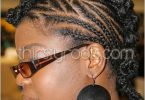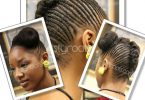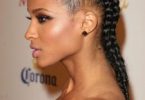It is very easy to learn how to cornrow online. Of course, the best way to learn anything is with individual instruction, but this method of braiding hair can also be learned by repetitively watching someone perform the task properly. The most basic principle behind the cornrow is that it is a tight braid that starts close to the scalp and works its way outward using an upward, underhand weave.
Following an online video is very easy and practical. You can learn on your own time and at your own pace. You can make time in your schedule to learn what you need to, but if you need to leave for whatever reason you can simply pause the lesson and come back to it later.
Another reason why learning online is a good idea is that you can have the video demonstrate something while you try it out on an actual person. As they say, “practice makes perfect,” and when you are trying to perfect this intricate, traditional art you will indeed need all the practice you can get. Fortunately, though, since these hairstyles often cost a lot of money, you can probably find a volunteer without any trouble.
What you might not learn from these videos is where cornrows originated. Evidence suggests that some of the earliest civilizations in history may have worn their hair this way. Hieroglyphs and sculptures from as early as 500 B.C. depict characters wearing these types of hairstyles. In fact, even the Sphinx himself has something that seems to be cornrows—or something like them—draped down that back of his head.
Also, cornrows seem to have at least three separate places of origin: Egypt, Africa, and Nigeria. According to the tradition, it also seems that cornrows are just a base design. Each community or tribe would use their own particular design which would somewhat depict where you came from. On occasion, they may also use beads or shells as part of their design depending on which region they might be from.
Cornrows came into America with the slave trade, although the native Africans were not allowed to show their cultural roots. It wasn’t even until the 1960s, when the Black Pride Movement starting to create more awareness of black history and culture that these hairstyles made a bit of a comeback. As black entertainment grew in America, more and more people also became interested in these styles as ways to communicate personal identity as well.






